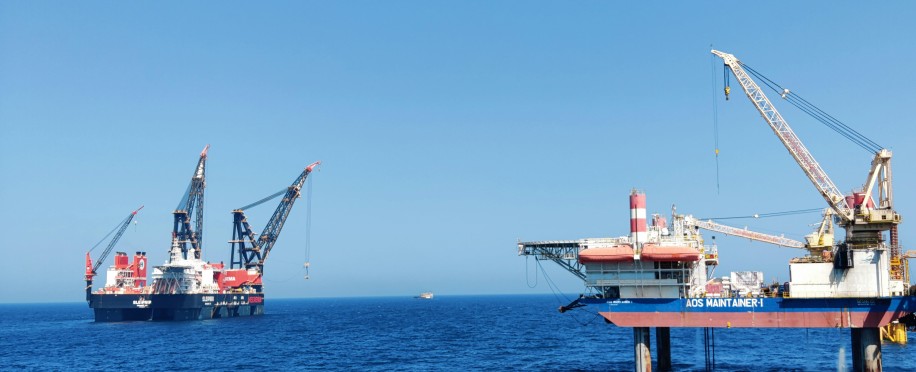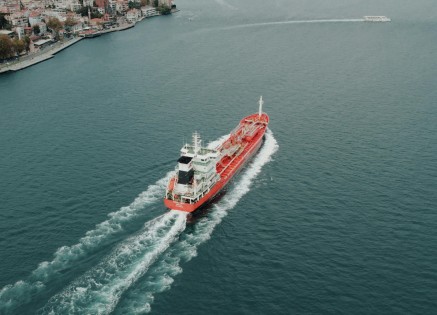Copyright © 2025 lmitac.com All Rights Reserved. Contact - Terms and Conditions - Privacy Policy - Quality Policy - Become an instructor - Vacancies - Sitemap
London Maritime Academy is a trade name for London Premier Groupversion: 2.9.0
London Maritime Academy is a trade name for London Premier Group

Posted on : 7/4/2025, 10:56:08 PM
Oil spills have a way of happening when you least expect them. One leak, one pipeline issue, one damaged vessel suddenly, and fuel and harsh chemicals are flowing where they shouldn’t be. Offshore, along the coast, or across inland waterways, it is everywhere! And the consequences are always the same. Gallons of hazardous fuel released and pollution, pollution everywhere!
Responding fast and concrete management is the only way to ensure safety in these situations, which is why Oil Spill Response existed in the first place. Nevertheless, by 2025, the industry will have learned hard lessons from history — Deepwater Horizon, Baltimore harbor incidents, and inland pipeline leaks — and turned them into strategies that work. But it takes more than a good plan. It takes experienced responders, trained teams, the right equipment, and a clear process for when things go wrong.
Let’s walk through how the oil industry, responders, and agencies are staying ready — and why good planning means better outcomes when spills occur.
First things first: containment. When oil spills, speed is everything. An emergency prevention department deploys booms to control the spread. In cooperation with skimmers that collect spilled oil from the water’s surface before it damages wildlife, environments, or inland waters.
Offshore, things get more complicated. Petroleum operations use subsea containment equipment to shut leaks at the source, preventing crude from flooding into marine ecosystems. These tools, often applied during emergencies, are a key line of defense.
Sometimes, chemical dispersants, carefully regulated, help break oil into smaller droplets. But their use includes strict planning with officials to make sure it’s safe for the environment.
In more extreme offshore spills, in situ burning is still considered. It’s not used often, but in the right situation, it helps remove large amounts of oil quickly when other recovery efforts are few.
The approach always depends on the incident, the location, and the type of oil involved. But across the board, the goal is the same: stop the spill, manage the effects, and protect coastal communities and inland waterways.
No response is successful without proper preparedness. Operators, agencies, and responders know that having plans on paper isn’t enough — those plans need to be tested, updated, and applied in the real world.
That means:
Preparedness also means meeting strict regulations. Petroleum companies must demonstrate financial responsibility to cover recovery and restoration efforts. That includes inland transport routes, offshore production sites, and coastal storage facilities.
In some regions, response coordinators use Geographic Response Plans (GRPs) to protect sensitive environments. These plans guide crew members during incidents, reducing response time and limiting damage.
It’s all part of a system designed to improve oil spill response — and to make sure when incidents occur, recovery starts within hours, not days.
The oil industry has leaned hard on technology to improve response efforts. Remote sensing tools — drones, satellites, and autonomous ships— track spilled oil and help responders direct containment equipment to the right locations.
AI modelling predicts how oil will move through waterways, improving the effectiveness of response teams and supporting environmental protection efforts.
Subsea containment systems, now standard in offshore operations, prevent small leaks from turning into large-scale disasters. When petroleum production is happening offshore, these tools give responders a reliable, fast way to contain the source.
Meanwhile, improved dispersants and chemical solutions in oil tankers have been developed with wildlife and marine environments in mind. It’s all about reducing the impact while keeping recovery efficient and safe.
Technology hasn’t replaced trained responders or experienced crews, but it’s given them better tools to do the job when spills happen.

Oil Spill Response isn’t left to chance. A mix of operators, government agencies, response coordinators, and organisations like OSRL, MSRC, and IPIECA work behind the scenes to keep systems running.
That includes:
It’s a worldwide network of support, designed to respond quickly, minimise the spills' effect, and protect public health and the environment.
The industry has come a long way, but it wasn’t without hard lessons.
Incidents in places including Baltimore, Texas, and offshore petroleum regions showed how direly unprepared reporting and responses can spiral out of control. But they also led to improvements that include better equipment, stricter regulations, more realistic drills, and stronger partnerships between all involved parties, be it operators, responders, and agencies.
Today, recovery efforts are faster, national response plans are clearer and easier to follow, while technology supports teams in limiting the damage. Nevertheless, the work never stops, nor will the gained experience. Responders continue to learn, companies invest in preparedness, and agencies improve oversight.
The goal? Keep the response quick, the impact limited, and the environment safe.
Oil Spill Response in 2025 is a system, with the amount of resources that hang in the balance, is no gamble. Action needs to be fast, and include a team of trained responders alongside reliable equipment, effective containment tools, and clear operational procedures.
The message from the industry, agencies, and response teams is simple: preparedness is the key to keeping our waters clean, our environments safe, and our communities protected.
And when oil spills happen — because sometimes they do — being ready makes all the difference.